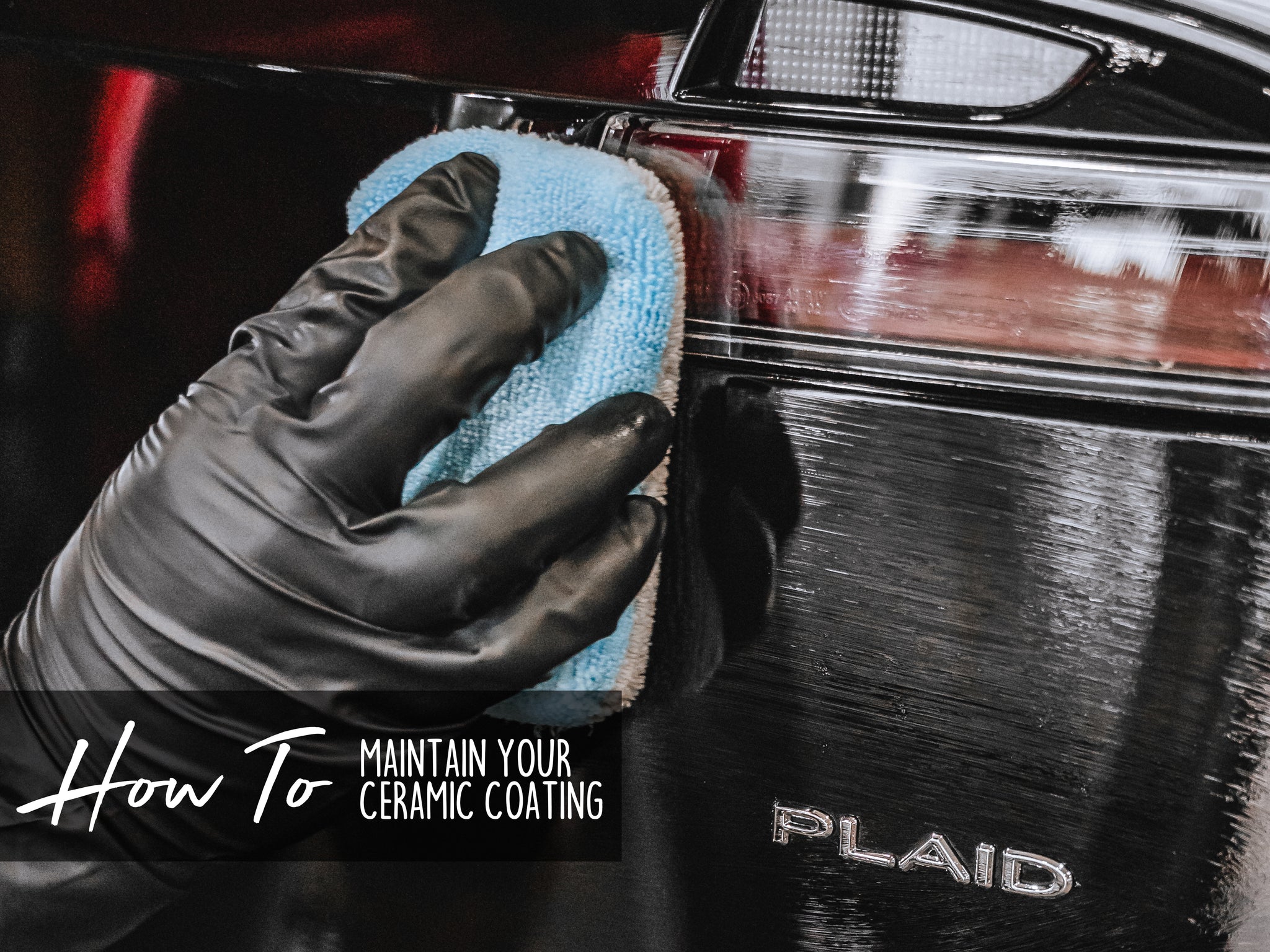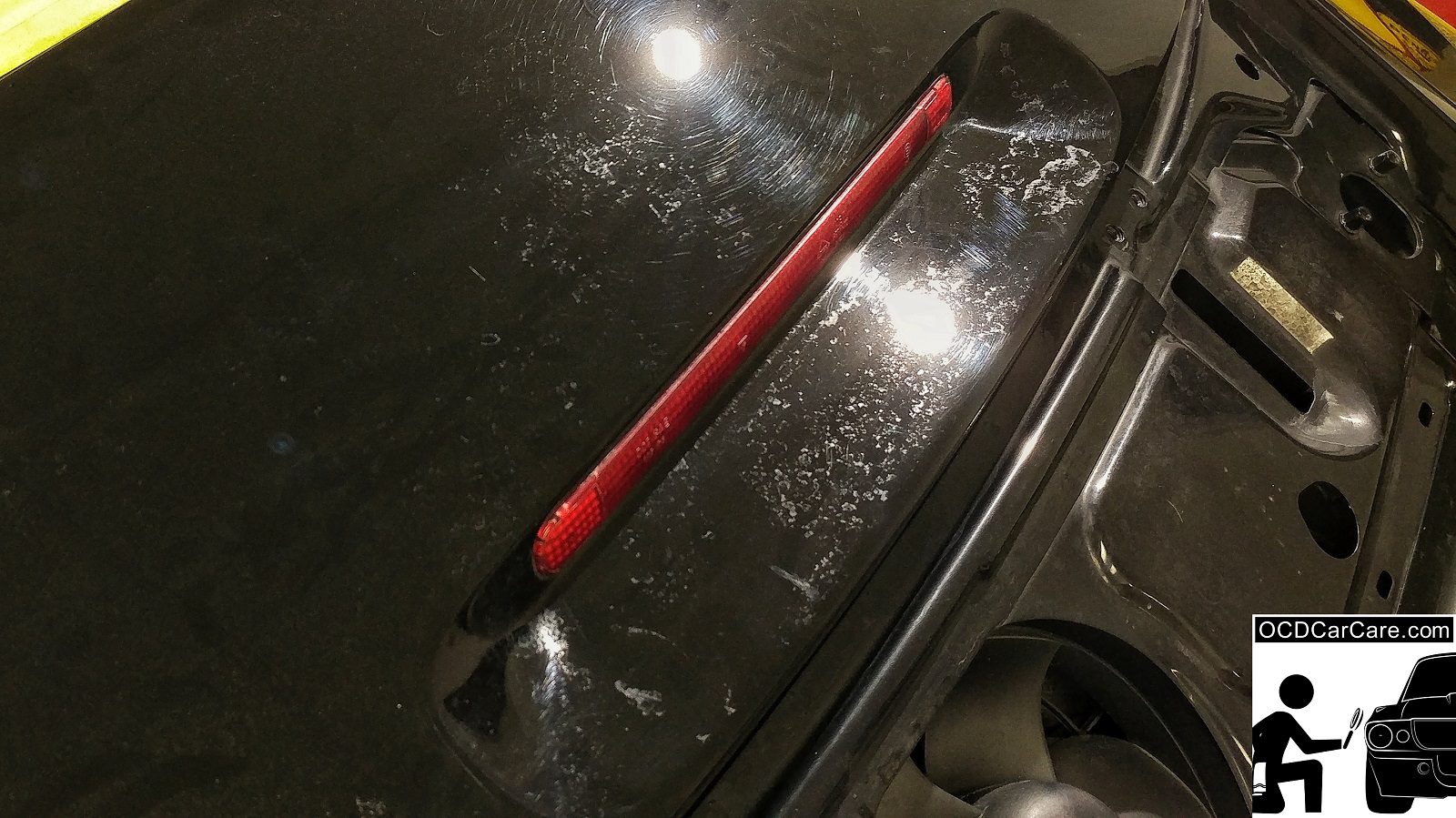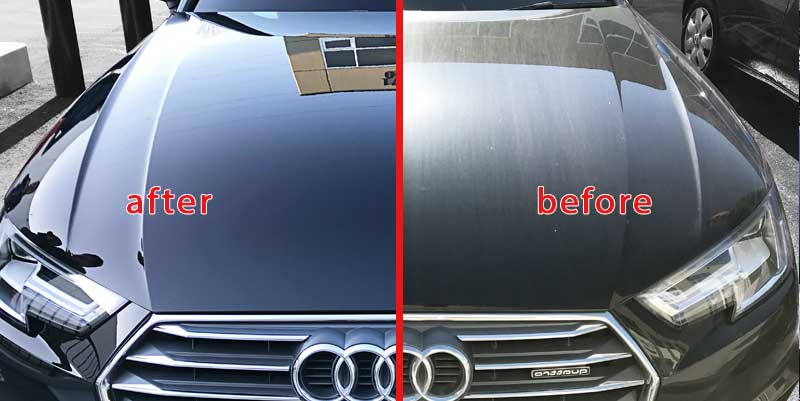Ceramic Finishing vs. Standard Wax: Which Offers Better Long-Term Security?
The dispute between ceramic finishings and standard wax for automobile security has actually gathered substantial interest among automobile fanatics and professionals alike. While both satisfy of guarding paint, their differences in sturdiness, application, and lasting upkeep costs may affect a customer's selection. Ceramic finishings boast superior durability and resistance to ecological elements, yet the intricacy of their application raises questions concerning ease of access and functionality. As we check out these contrasting options, it comes to be important to take into consideration not just the instant advantages but also the effects for car care in time.
Review of Ceramic Coating
Ceramic finishing has actually gotten substantial popularity among auto lovers and detailers alike due to its innovative protective qualities. This ingenious modern technology is designed to create a sturdy, hydrophobic guard over an automobile's paint surface area, significantly boosting its resistance to environmental pollutants such as dirt, UV rays, and chemical discolorations. Unlike conventional wax, which provides a temporary layer of protection, ceramic coatings bond at a molecular degree with the paint, providing long-lasting durability-- frequently prolonging past two years with appropriate maintenance.
The application process includes precise prep work of the automobile's surface, consisting of cleansing and polishing to ensure ideal adhesion. When used, the finish cures to create a robust layer that not just adds deepness and gloss to the paint yet likewise simplifies upkeep. With its hydrophobic residential properties, ceramic finishing allows water and dust to move off more quickly, decreasing the regularity of laundries and lessening the danger of swirl marks.
Furthermore, ceramic coverings are available in different formulations, permitting customers to choose products customized to their details demands and preferences. On the whole, ceramic finish stands for a substantial advancement in paint security modern technology, providing superior performance contrasted to standard alternatives.
Overview of Standard Wax
Generally considered as a staple in automotive care, wax acts as a prominent option for those looking for a simple technique to enhance and secure their car's paint - ceramic coating. Automotive wax normally comprises natural components, such as carnauba, or artificial substances, developed to produce a safety layer externally of the paint. This layer not just boosts the vehicle's gloss and beam but likewise gives a barrier against environmental impurities
The application of wax is normally user-friendly, making it easily accessible for both specialists and do it yourself fanatics. It can be used by hand or machine, enabling versatility in the describing procedure. As soon as applied, wax needs a treating duration, after which it hardens to develop a safety covering. Wax is likewise recognized for its ability to drive away water, advertising a beading effect that assists in the avoidance of water areas and rust.
However, while wax is effective for improving the aesthetic charm of a car, it is essential to keep in mind that the security it provides might demand more constant reapplication compared to different items, such as ceramic coverings. Overall, conventional wax stays a favored alternative for those prioritizing convenience of usage and instant aesthetic improvement.
Longevity and Durability Comparison
While both ceramic coverings and typical wax offer protective advantages for auto paint, their durability and long life vary significantly. Standard wax, usually made from all-natural carnauba recommended you read or artificial polymers, normally provides a protective layer that lasts roughly three to six months. This reasonably brief life-span requires normal reapplication to maintain optimal defense.
In contrast, ceramic coatings are engineered from innovative nanotechnology, developing a covalent bond with the paint surface area. This causes a durable, hydrophobic layer that can withstand for two to five years, depending upon the product and environmental problems. The remarkable durability of ceramic finishes is credited to their chemical structure, which offers boosted resistance to scratches, UV rays, and oxidation.

Protection Versus Environmental Aspects
Securing a lorry's paint from environmental elements is crucial for keeping its look and value gradually. Vehicles are regularly subjected to a selection of elements, including UV rays, bird droppings, tree sap, acid rain, and roadway grime, all of which can compromise the honesty of the paintwork.
Ceramic finishes provide a durable protection against these ecological aggressors. Unlike standard wax, which can deteriorate quickly under UV direct exposure, ceramic coverings develop a sturdy, hydrophobic layer that withstands the dangerous effects of sunshine and environmental contaminants. This sophisticated modern technology develops a chemical bond with the lorry's surface, using remarkable defense that lasts for years, also in extreme conditions.
In comparison, ceramic layers preserve their protective qualities longer, dramatically lowering the threat of paint damage and guaranteeing that the lorry retains its visual charm. As a result, ceramic finishes are significantly acknowledged as the exceptional selection for long-lasting security versus environmental variables.
Application and Maintenance Distinctions
The techniques of application and succeeding maintenance for ceramic layers and conventional wax vary considerably, influencing the overall user experience and effectiveness of each product. Ceramic finishes call for a more complex application process, usually including surface area prep work that consists of cleaning, sanitizing, and brightening the car. As soon as the surface area prepares, the ceramic finish is applied in a regulated setting, often needing expert knowledge to make sure appropriate curing and bonding to the paint.

While both items boost automobile look, the longer-lasting protection offered by ceramic layers might validate their first investment, in spite of the more demanding application see this page procedure. On the other hand, conventional wax continues to be a popular choice for those looking for a simpler, albeit short-term, remedy.

Final Thought
Finally, ceramic finishings demonstrate significant advantages over traditional wax in regards to longevity and ecological security. With a life-span extending two to 5 years and premium resistance to UV rays, dirt, and chemical spots, ceramic coatings provide a more reliable solution for long-term lorry upkeep. Although the application procedure may require specialist competence, the resulting expense savings and reduced frequency of reapplication highlight the worth of ceramic finishings for those seeking optimal lorry defense.
The dispute between ceramic layers and conventional wax for car protection has actually garnered substantial focus amongst vehicle enthusiasts and professionals alike. Unlike standard wax, which provides a short-lived layer of protection, ceramic coverings bond at a molecular level with the paint, supplying resilient resilience-- usually prolonging past two years with appropriate upkeep.
While both ceramic finishes and conventional wax offer protective benefits for automotive paint, their longevity and longevity differ significantly. For auto enthusiasts seeking lasting protection, ceramic coverings offer an engaging advantage over typical wax items.
In conclusion, ceramic finishings show substantial advantages over standard wax in terms of longevity and ecological protection.
Comments on “Protect Your Car from the Elements with Ceramic Coating Technology”